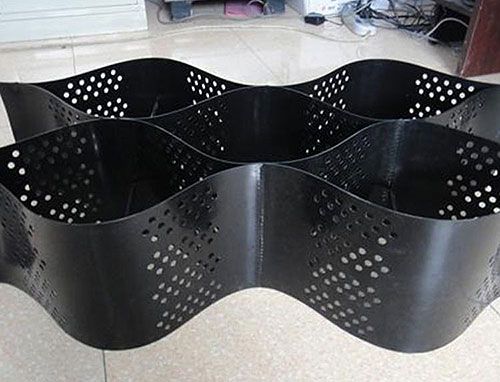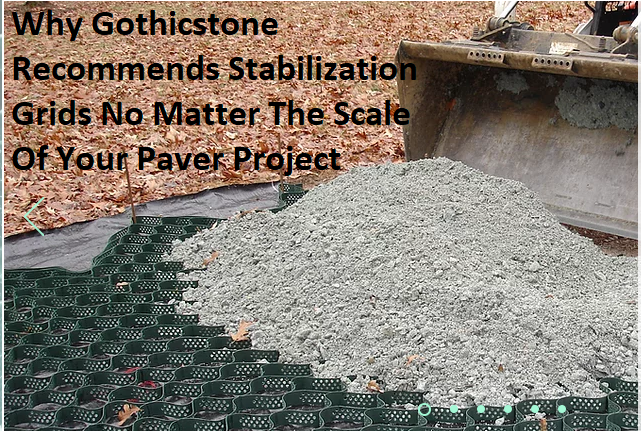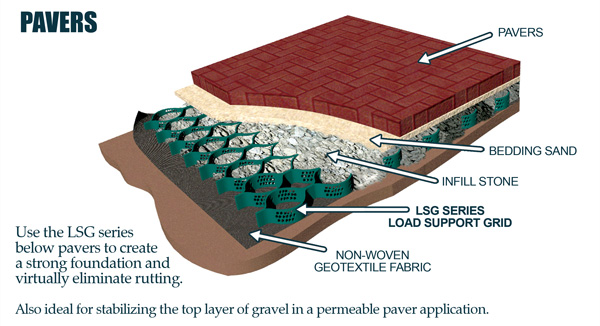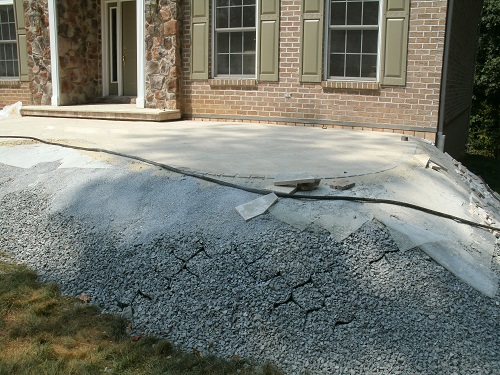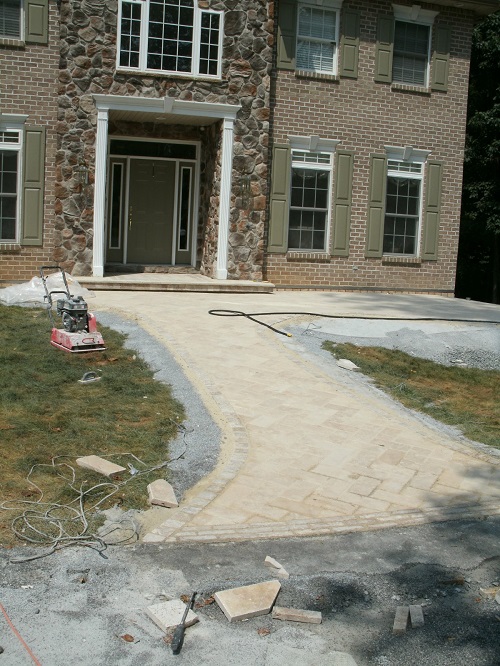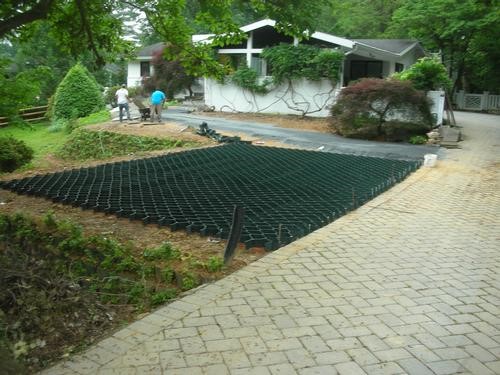The Power of Geocells, Geotextiles, and Geogrids to Bulletproof Paver Installations
Paver installations are an excellent way to enhance the aesthetic appeal and functionality of outdoor spaces. However, ensuring the longevity and stability of these installations can be challenging, especially in areas prone to soil erosion, shifting, or settling. In the quest for a robust and enduring paver foundation, advanced technologies such as geocells, geotextiles, and geogrids have emerged as indispensable tools. Explore the transformative impact of these technologies in fortifying paver installations such as driveways, patios, pool decks, walkways, and other paver areas.
Geocells: Reinforcing the Foundation
Geocells are also known as cellular confinement systems. They are 3-D honeycomb-like structures made from high-density polyethylene (HDPE) or other durable materials. Geocells create a reinforced grid that distributes loads and prevents lateral movement when filled with gravel.
– Load Distribution: Geocells excel in distributing the weight of pavers evenly, minimizing the risk of uneven settling and surface deformations.
– Erosion Control: Geocells act as a barrier against soil erosion, ensuring that the foundation remains intact over time, even in areas with high water flow or heavy rainfall.
– Versatility: Geocells are adaptable to various soil types and terrains. They are an ideal choice for stabilizing the base of paver installations.
Geotextiles: Enhancing Stability and Drainage
Made from synthetic materials like polyester or polypropylene, Geotextiles are permeable fabrics. Placed beneath the paver base, geotextiles serve multiple purposes, including weed suppression, separation of soil layers, and improved water drainage.
– Weed Prevention: Geotextiles act as a protective barrier, preventing weeds from penetrating the paver base and compromising its integrity.
– Separation of Soil Layers: By preventing the mixing of different soil layers, geotextiles enhance the stability of the paver foundation, reducing the risk of settling.
– Water Drainage: Geotextiles allow water to drain through the paver base. Preventing water buildup that could lead to soil erosion or the destabilization of the foundation is critical.
Geogrids: Strengthening Structural Integrity
Geogrids are geosynthetic materials with a grid-like structure, commonly made from polyester, polyethylene, or polypropylene. They provide additional tensile strength and stability installed in the paver base.
– Load Distribution: Geogrids reinforce the paver base, distributing loads more effectively and reducing the risk of surface deformation.
– Improved Load-Bearing Capacity: By enhancing the structural integrity of the base, geogrids increase the load-bearing capacity of the paver installation, allowing it to withstand heavier loads.
– Resistance to Soil Movements: Geogrids resist soil movements and lateral pressure. This helps to maintain the stability of the paver foundation over time.
Conclusion:
The integration of advanced technologies such as geocells, geotextiles, and geogrids represents a groundbreaking approach to fortifying paver installations. By addressing familiar challenges such as soil erosion, settling, and uneven loads, these technologies contribute to the creation of durable and long-lasting outdoor spaces. As the demand for resilient infrastructure continues to grow, the adoption of these innovative solutions will likely become a standard practice in the construction and landscaping industries, ensuring the longevity and stability of paver installations for years to come.
Related References:
- https://en.wikipedia.org/wiki/Cellular_confinement
- https://en.wikipedia.org/wiki/Geosynthetics
- https://howtohardscape.com/geogrid-installation/
- https://www.gothicstone.com/why-we-recommend-stabilization-grids-for-the-small-scale-paver-projects/
- https://www.gothicstone.com/considerations-for-specifying-natural-stone-in-residential-commercial-vehicle-applications/
- https://www.gothicstone.com/driveway-stone-pavers-make-an-impression-and-add-value/
- https://www.gothicstone.com/driveway-installation-best-products-and-technologies-for-lifetime-value/
- https://www.gothicstone.com/driveway-paving-considerations-for-specifying-natural-stone-for-vehicle-applications/
